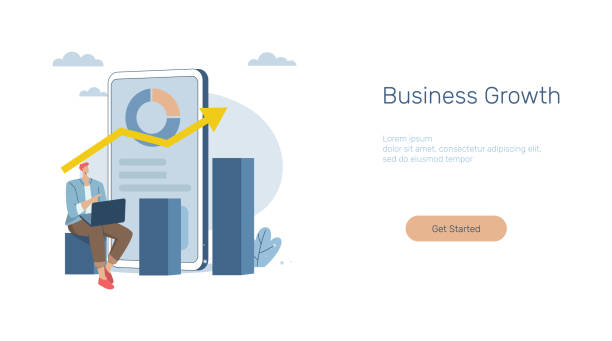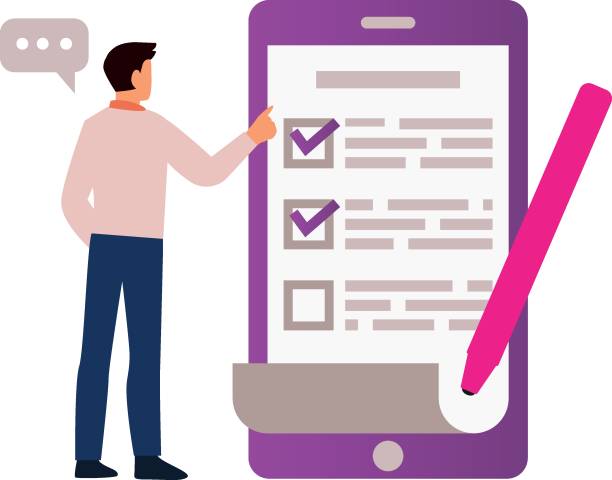Introduction to Multilingual Website Design and Its Importance

In today’s world, where geographical boundaries have lost their meaning in cyberspace, the need to connect with global audiences is felt more than ever.
This is where the concept of multilingual website design gains critical importance.
A multilingual website not only opens a gateway to #global_markets but also enables businesses to connect with diverse cultures and languages and respond to their needs.
This approach provides the potential for #greater_customer_reach and directly impacts #business_growth.
Beyond mere text translation, building a multilingual site requires a deep understanding of cultural localization and adherence to #multilingual_SEO standards.
Given the increasing competition in the online space, having a platform with multilingual capabilities has become a #competitive_advantage that guarantees your presence on the global stage.
This article helps you get acquainted with various aspects of multilingual website design and its key points.
Creating a successful multilingual website is an investment that will yield significant returns, as it allows you to convey your message to millions of people worldwide, without language creating a barrier.
Indeed, this is a big step towards the widespread adoption and increased influence of your brand in international markets.
Disappointed with your e-commerce site’s low conversion rate? Rasaweb transforms your e-commerce site into a powerful tool for attracting and converting customers!
✅ Significant increase in visitor-to-buyer conversion rate
✅ Exceptional user experience to boost customer satisfaction and loyalty⚡ Get free consultation from Rasaweb!
Challenges and Opportunities in Building a Multilingual Website

Multilingual website design, while full of unique opportunities for expanding reach and accessing new markets, also comes with its own specific challenges.
One of the main challenges is content management and ensuring the accuracy and quality of translation across all languages.
Mere word-for-word translation is not enough; content must be localized to align with the culture and linguistic sensitivities of the target audience.
This includes translating idioms, units of measurement, dates, and even colors and images, which may have different meanings in various cultures.
Another challenge relates to technical and SEO issues.
How can one ensure that search engines correctly index your multilingual website and display it to users in the appropriate language? This is where concepts like hreflang tags and multilingual URL structures come into play.
However, the opportunities that multilingual website development offers are very impressive.
Access to millions of new users worldwide, increased brand credibility, improved user experience for international audiences, and creating a competitive advantage in markets that are not yet fully saturated, are just some of these opportunities.
With careful planning and the use of experienced specialists in multilingual SEO and localization, these challenges can be overcome, and the full potential of a multilingual site design project can be leveraged.
This investment not only helps current business growth but also prepares it for a more global future.
Choosing the Right Platform and Technology for a Multilingual Website

Choosing the right platform is the cornerstone of success in multilingual website design.
This decision should be made based on the specific needs of the project, budget, and future development capabilities.
Content Management Systems (CMS) like WordPress, Joomla, and Drupal each have their pros and cons in the context of multilingualism.
WordPress, with plugins like WPML and Polylang, makes building a multilingual website relatively easy, but it may require more optimization for very large and complex projects.
Drupal is designed with strong multilingual capabilities from the outset and is an ideal choice for enterprise and complex projects with high customization needs.
Joomla also offers acceptable multilingual support through its plugins and core.
In addition to off-the-shelf CMSs, developing custom platforms is also an option that gives you full control over performance and scalability, but typically requires more cost and time.
The most important point in platform selection is ensuring its ability to manage multilingual content, support for multilingual SEO (such as hreflang tags), and the possibility of customizing the user experience for each language.
Furthermore, server infrastructure and the capability to host large content volumes and high international traffic should also be considered.
A suitable platform for multilingual website design should be both technically powerful and user-friendly for content management and updates.
Comparison of Popular Platforms for Multilingual Website Design
| Platform | Multilingual Ease | Customization Capability | Scalability | Suitable for |
|---|---|---|---|---|
| WordPress | Medium (with plugins) | High (with coding) | Medium to High | Small to medium businesses, blogs |
| Drupal | High (powerful core) | Very High | Very High | Large organizations, governments, complex projects |
| Joomla | Medium (with plugins and core) | Medium | Medium | Small to medium businesses, portals |
| Custom Platform | Complete (designed from scratch) | Complete | Depends on design | Very specific needs, full control, high budget |
The Importance of Professional Translation and Content Localization

One of the biggest mistakes made in multilingual website design is relying solely on machine or unprofessional translation.
Translation is more than just replacing words from one language to another; it’s a complex process that requires a deep understanding of cultures, idioms, and even the appropriate tone for each language and audience.
Content localization means that your content is not only linguistically correct but also culturally aligned with the target audience.
This includes adapting figures, units, dates, addresses, and even images that may have different meanings or connotations in various cultures.
For example, the color red symbolizes love and passion in some cultures, while in others it can symbolize danger or anger.
Without proper localization, even the best multilingual website design may fail to establish effective communication with audiences and could even lead to misunderstandings.
Hiring native translators who are specialists in your field, and who are not only fluent in the language but also well-versed in its culture, is crucial.
This ensures that your brand message is accurately conveyed and your credibility in the global market is maintained.
Accurate localization increases conversion rates and improves user experience because users feel the website is specifically designed for them.
This investment in professional translation and localization not only helps strengthen your global presence but also makes your multilingual site a powerful tool for communication and customer acquisition.
Does your current website convert visitors into customers, or does it drive them away?
Rasaweb solves this problem forever with professional corporate website design!
✅ Establish strong credibility and branding
✅ Attract target customers and increase sales⚡ Get a free consultation now!
SEO Optimization for Multilingual Websites: Key Tips

Success in multilingual website design is heavily dependent on a strong multilingual SEO strategy.
Without proper SEO, even if your content is perfectly translated, users won’t be able to find it.
One of the most important elements in multilingual SEO is the correct use of hreflang tags.
These tags inform search engines like Google that different language versions of a page exist, preventing duplicate content issues.
Choosing the right URL structure is also crucial: should you use subdirectories (e.g., yoursite.com/fr/), subdomains (e.g., fr.yoursite.com), or top-level domains (e.g., yoursite.fr)? Each has its pros and cons that must be chosen based on your goals and resources.
Keyword research for each language is also an essential step.
Keywords that are effective in one language may not be applicable or may have different search volumes in another language.
Therefore, separate keyword research should be conducted for each language and region.
Additionally, site loading speed, mobile compatibility, and user experience (UX) also play an important role in multilingual SEO.
Ensuring that your website loads quickly and its user interface is optimized for all languages helps with better rankings.
By correctly implementing these key tips, your multilingual site build will be understandable and accessible not only to users but also to search engines, helping you reach more global audiences and strengthen your online presence.
These SEO strategies play a vital role in the success of a multilingual website.
User Experience and User Interface Design in Multilingual Websites

In multilingual website design, User Experience (UX) and User Interface (UI) design are of particular importance.
A successful multilingual website must be able to provide a seamless and satisfying user experience for all users, regardless of their language or culture.
This means designing a clear and accessible language switcher that allows users to easily switch between languages.
This switcher should be placed in a fixed and visible location, such as the header or footer of the site.
Furthermore, attention must be paid to text direction (RTL/LTR) in different languages.
For example, Persian and Arabic are written from right-to-left (RTL), while English is written from left-to-right (LTR); this difference must be reflected in the UI design and page layout.
Fonts, text size, and even whitespace between elements must also be chosen to ensure appropriate readability and aesthetics for each language and writing system.
Images and icons should also be universal or localized for each culture to avoid any misunderstandings.
Page loading speed is also an important factor in user experience; international users expect your site to load quickly, even if they are on another continent.
Therefore, optimizing the server and using a CDN (Content Delivery Network) is recommended to serve users in different parts of the world.
By focusing on these details, a multilingual site can provide an excellent user experience that helps increase customer loyalty and expand your brand globally.
Content Management and Updates in Multilingual Websites

Content management in a multilingual website design can be more complex than a single-language site, but with proper planning and tools, it is manageable.
The main challenge is ensuring that all language versions of a page are synchronized and up-to-date.
Imagine adding a new product or changing prices; these changes must be quickly applied across all languages.
Modern Content Management Systems (CMS) offer tools to facilitate this process.
For example, some multilingual plugins in WordPress allow you to manage content in a shared user interface and apply changes automatically or manually across all languages.
Establishing a clear workflow for content translation and review is essential.
This workflow should include steps for content creation in the source language, translation, localization, review by native speakers, and finally, publication.
Using Translation Management Systems (TMS) can automate and streamline this process.
These tools enable the management of Translation Memory and Terminology, which significantly helps maintain the consistency and quality of translations over time.
Additionally, a strategy must be in place for updating old content and ensuring its relevance to newer versions in different languages.
Managing content on a multilingual website requires coordination among various teams, from content creators and translators to developers and SEO specialists.
A successful multilingual platform has a system that allows updates to be applied quickly and with minimal errors across all language versions.
This efficient management not only reduces time and cost but also helps maintain a positive user experience and your brand’s credibility internationally.
Content Management Strategies for Multilingual Websites
| Strategy | Description | Advantages | Potential Disadvantages |
|---|---|---|---|
| Manual Management | Each language is managed separately in the CMS. | Full control over each language version | Time-consuming, prone to human error, difficult for large scale |
| CMS Multilingual Plugins | Using plugins (e.g., WPML) for centralized management. | Relative ease, better synchronization, CMS integration | Plugin dependency, may be limited for complex customizations |
| Translation Management Systems (TMS) | Specialized tools to automate the translation and localization process. | Cost reduction, increased speed, translation consistency, translation memory | Requires initial investment, complexity in setup |
| Dedicated Content and Translation Teams | Forming specialist teams for each language/region. | High content quality and localization, deep understanding of the local market | Very costly, requires high coordination |
Legal and Cultural Aspects in Multilingual Website Design

Multilingual website design is not limited to technical and linguistic discussions; legal and cultural aspects also play a vital role in its success.
Adhering to data protection laws (such as GDPR in Europe) and e-commerce regulations in each country is of paramount importance.
Failure to comply with these laws can lead to heavy fines and loss of user trust.
Privacy policies, terms and conditions, and cookie management methods must be precisely localized and displayed for each region and language.
On the other hand, cultural sensitivities must also be carefully considered.
Images, colors, symbols, and even the humor used in content may have different meanings or interpretations in various cultures.
For instance, some colors can symbolize joy in one culture and mourning in another.
The use of informal or colloquial language in one country might be considered normal, while in another, it could be offensive.
Building a multilingual website requires in-depth research into target audiences and consultation with local cultural specialists.
This approach ensures that your website is not only legally compliant with local laws but also culturally acceptable, establishing a deeper connection with audiences.
Paying attention to these details enhances your brand credibility and helps you penetrate new markets more effectively.
A successful multilingual website is one that not only conveys its message in various languages but also interacts with its audience in a respectful and culturally appropriate manner.
Are you bothered by losing customers who visit your site to make a purchase?
Rasaweb is your specialized solution for a successful online store.
✅ Significantly boost your online sales
✅ Build trust and professional branding with customers⚡ Get a free consultation from Rasaweb experts now!
Case Studies and Success Stories in Multilingual Website Design

To better understand the potential of multilingual website design, examining successful examples can be very inspiring.
Large companies like Google, Amazon, and Apple all have powerful multilingual websites that allow them to serve millions of users worldwide.
Their secret to success is not just in translation, but in deep localization and providing a seamless user experience in every language.
For example, Amazon not only displays products in different languages but also localizes the shopping experience based on geographical region, local currency, and even shipping preferences.
Another example is websites active in the tourism industry.
Travel agencies and hotel booking platforms that offer services in various languages are seeing a significant increase in bookings and satisfaction from their international customers.
This indicates that users prefer to interact with a platform that speaks their native language and caters to their cultural needs.
In the field of online education, platforms that offer their courses in different languages have managed to attract more students from around the world.
These successes emphasize the fact that a multilingual platform allows you to target new markets and operate more competitively.
These success stories show that designing and implementing a multilingual website with the right strategy is not only feasible but can yield tremendous returns and contribute to your business’s sustainable growth.
These experiences prove that the importance of multilingual website design is beyond a luxury option; it is a strategic necessity in the era of globalization.
The Future of Multilingual Website Design and Emerging Trends

The future of multilingual website design is rapidly evolving, and emerging trends are setting a new landscape for businesses.
One of the most important of these trends is the astonishing advancements in Artificial Intelligence (AI) and Machine Translation.
While machine translations are not yet a complete substitute for human translators, AI-powered tools are making significant progress and can serve as a strong starting point for content translation and cost reduction, provided they are reviewed and edited by a native translator.
Also, voice search and voice assistants are expanding, which highlights the need to optimize content for multilingual voice searches.
This means websites should be designed to answer user questions in various languages and using a conversational tone.
Content personalization based on the user’s language and geographical location is also an important and increasingly growing trend.
This means that the content presented to the user can go beyond mere translation, changing based on their specific interests and needs in that geographical region.
The increasing importance of Web 3.0 and Metaverse can also add new dimensions to multilingual website development, with virtual spaces offering unprecedented linguistic and cultural interactions.
Ultimately, focusing on the global market and the need to provide an immersive user experience means that multilingual website design will become an essential standard, and businesses that anticipate and implement these trends will be more successful in the future.
Frequently Asked Questions
| Question | Answer |
|---|---|
| What is multilingual website design? | It is the design of a website whose content is available to users in several different languages, allowing users to choose their preferred language. |
| Why is a multilingual site important? | To reach international audiences, increase website traffic, improve user experience for non-Persian speaking visitors, and expand business into global markets. |
| What are the benefits of having a multilingual website? | Increased international SEO, attracting new customers from different countries, enhancing business credibility and professionalism, and reducing bounce rates by providing understandable content. |
| What are the methods for implementing a multilingual site? | Using subdirectories (e.g., example.com/en/), subdomains (e.g., en.example.com), or separate top-level domains for each language (e.g., example.com and example.de). |
| Which URL structure is best for international SEO? | Subdirectories (e.g., example.com/en/) are often preferred for SEO due to consolidating the main domain’s authority, though each method has its pros and cons. |
| How does a multilingual site affect SEO? | By providing content in different languages, the site appears in local search results for those languages, click-through rates and traffic increase, and overall domain authority improves. Correct use of hreflang tags is very important. |
| How is content translation managed? | One can use professional translators, machine translation tools (with human editing), or Content Management Systems (CMS) with built-in multilingual capabilities or relevant plugins. |
| What are the common challenges in multilingual website design? | Managing translated content, maintaining design consistency across different languages, compatibility with right-to-left (RTL) languages like Persian and Arabic, optimizing SEO for each language, and choosing the appropriate URL structure. |
| How do I manage text direction (LTR/RTL) on a multilingual site? | For right-to-left languages (like Persian), you need to apply specific CSS styles to change text direction, element layout, and table direction. Often by using the property direction: rtl; and other related settings. |
| How can users change the website language? | Usually by using a button, dropdown menu, or language selector widget clearly placed in the site’s header or footer. Automatic detection of the user’s browser language and suggesting a language change is also common. |
And other services of Rasaweb Advertising Agency in the field of advertising
Smart Marketing Automation: A dedicated service for growth in increasing website visits based on intelligent data analysis.
Smart Advertorial: A professional solution for customer acquisition focusing on precise audience targeting.
Smart Customer Journey Map: A combination of creativity and technology for analyzing customer behavior through user experience customization.
Smart Customer Journey Map: An innovative service for increasing click-through rates through attractive user interface design.
Smart Brand Identity: A creative platform for improving sales increase using real data.
And over a hundred other services in the field of internet advertising, advertising consultation, and organizational solutions
Internet Advertising | Advertising Strategy | Advertorial
Resources
- Benefits of Multilingual Website Design for Your Business
- The Impact of Digital Art on Website Design Trends
- Complete Guide to SEO for Multilingual Websites
- Choosing the Best CMS for Multilingual Websites
⚡ Rasaweb Afarin, specialists in digital marketing solutions, helps your business achieve its goals. We are your best partner for success in the digital world in the areas of WordPress website design, SEO optimization, social media management, and online advertising campaigns. Contact us today for a free consultation and to learn about our services!
📍 Tehran, Mirdamad Street, next to Bank Markazi, Kazeroun South Alley, Ramin Alley, No. 6


